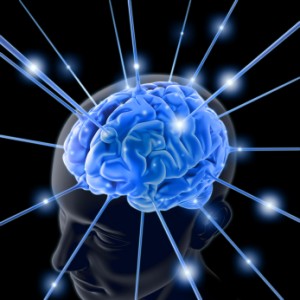How does our brain effect reality, what are examples in physics
 What is the real secret? Cerebrology can enhance our intent; our intent is an automatic non-verbal part of us.
What is the real secret? Cerebrology can enhance our intent; our intent is an automatic non-verbal part of us.
You may think of intent as who we are or our soul. Other verbal or non-verbal enhancements we may do are only temporary because they are not stored in the permanent files our brain automatically uses and so they do not affect our intent.
When you read my blog called “What Controls our Brain“, I am sure you saw that the non-verbal part of our brain, where our intent is located, controlled how we automatically prepared, which in turn altered our perception, reactions, emotions and body. In this blog was also an experiment that showed that up to 7 seconds before we “think” we make a decision to use our left or right hand to touch something our non-verbal brain and its “intent” has already made the decision. This shows that our thoughts are a mere afterthought to our intent.
Because Cerebrology opens and rewrites non-verbal information we use in specific files that produce what becomes our intent, we are able to create improvements in what happens. Some people have called the results from brain enhancement metaphysics but it is just brain enhancement and physics.
In his article, “Heart Rate Differences between Targets and Nontargets in Intuitive Tasks” Tressoldi reports the results of two experiments, aimed at investigating pre-stimuli heart rate changes. In the experiment a statistical significance (error risk) of p=0,015 was obtained while in the second experiment p reached 0,001. These results support the hypothesis that the heart rate reacts before the stimulus takes place (Tressoldi and coll., 2005).
In 2003, Spottiswoodie and May in Cognitive Science Laboratory replicated the Biermnan and Radin (1997) experiments that show an increase in skin conductance 2-3 seconds before emotional stimuli are presented. Spottiswoodie and May replicated these results with a statistical significance of p=0, 0005, and performed controls in order to exclude all possible artifacts and alternate explanations. These results support the hypothesis that the autonomic nervous system reacts in advance to stimuli (Spottiswoodie and May 2003).
In 1979 the PEAR (Princeton Engineering Anomalies Research) laboratory was established under the direction of Robert Jahn, Dean of the University’s School of Engineering and Applied Sciences. The purpose of this laboratory was to replicate and study the results obtained by a student, which showed anomalous mind/machine interactions when using REG systems (Random Event Generator). PEAR and a consortium of other universities have replicated these results. The anomalous mind/machine interaction which is observed is very simple: REG systems produce ultra-precise Gaussian distributions, but when a subject tries to distort these distributions only by the expression of his intentionality, statistically significant deviations are observed. Even more fascinating is the fact that those distributions which have been produced before the subjects expression of intentionality show an amplified effect. The statistical significance of these amplifications is p<0,00000001 (Jahn, 2005). These experiments show that living systems constantly seem to be engaged in anticipation and show that intent can influence matter.
I look forward to more discussions of how our brain automatically changes our reality. Thank you for joining me.
What controls our brain?
We like to think what we do is under control of our thoughts…but what really controls our brain?
We first develop empathy and through this we learn many things including the ability to understand facial expression.
 We next learn affect. After empathizing with our parents we imitate how our parents feel about themselves in various situations. What automatically happens to our parents now happens to us. This is what creates the self image we have.
We next learn affect. After empathizing with our parents we imitate how our parents feel about themselves in various situations. What automatically happens to our parents now happens to us. This is what creates the self image we have.
It would be nice to enhance our brain so we could control how we automatically felt..
What if we could!




